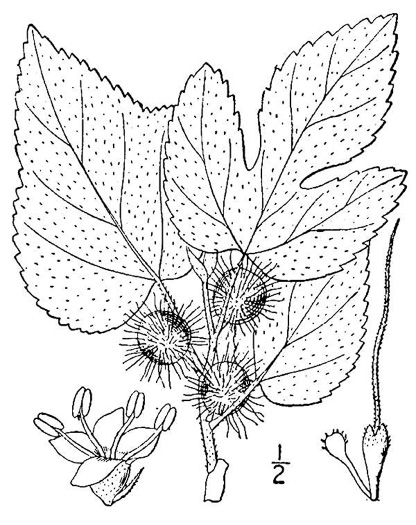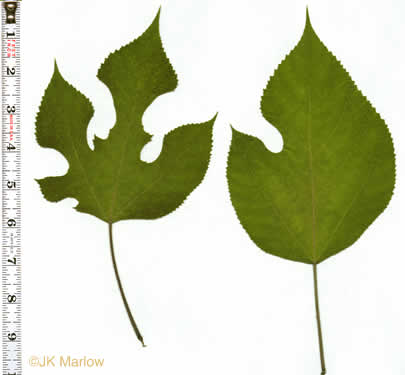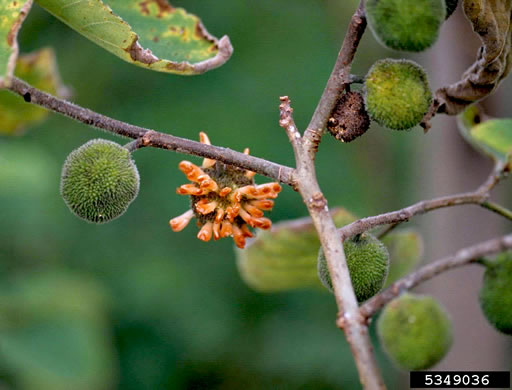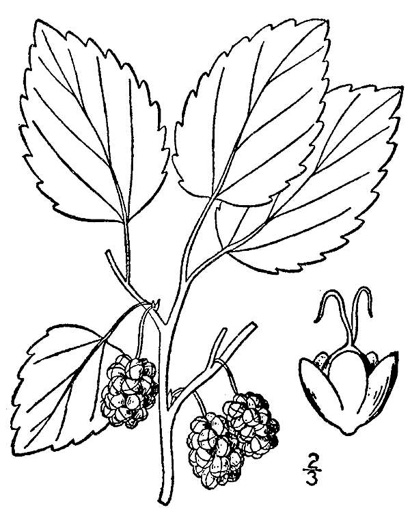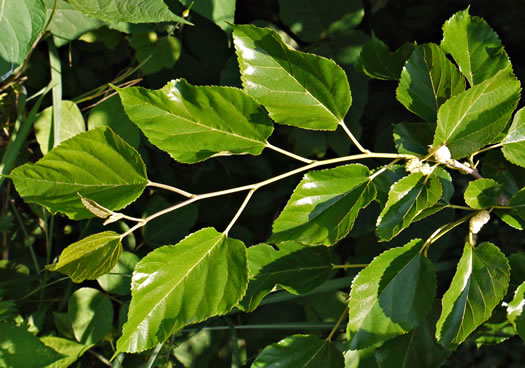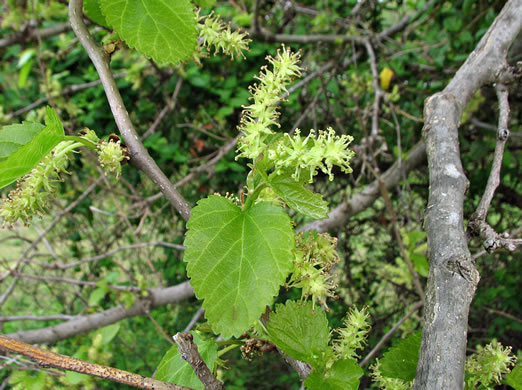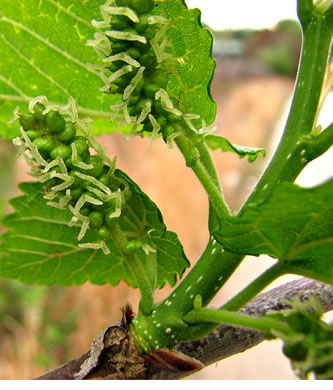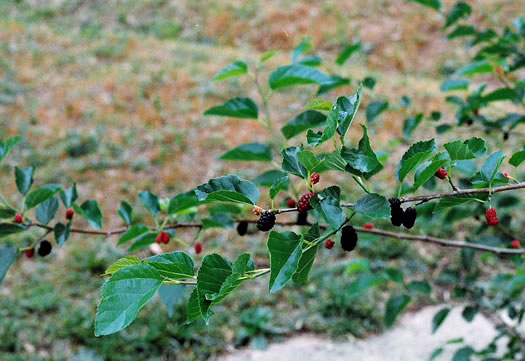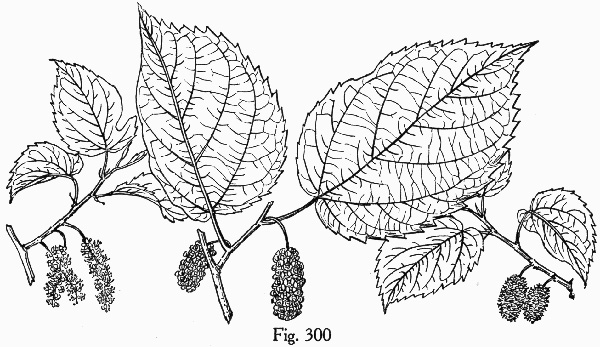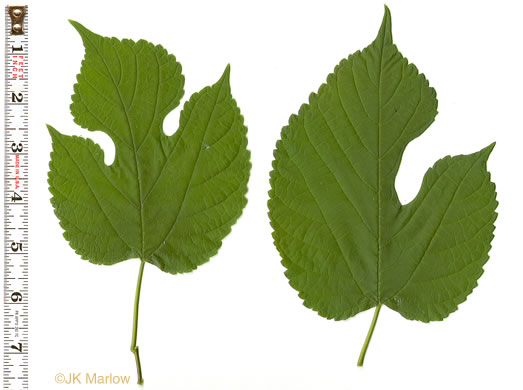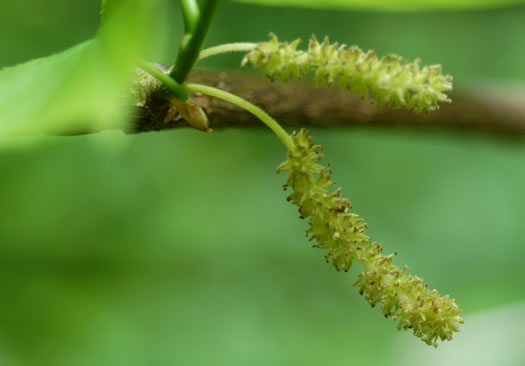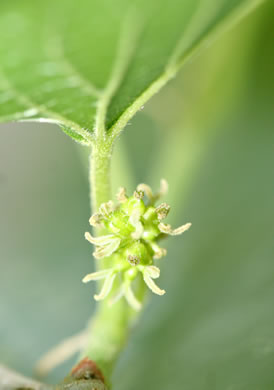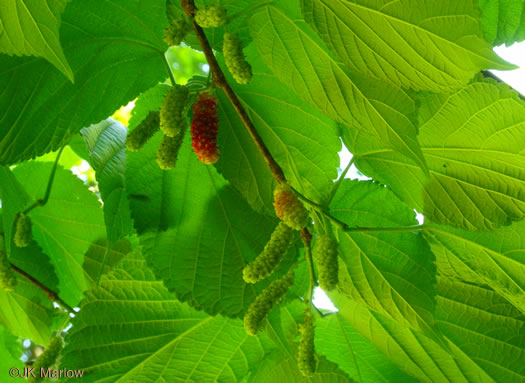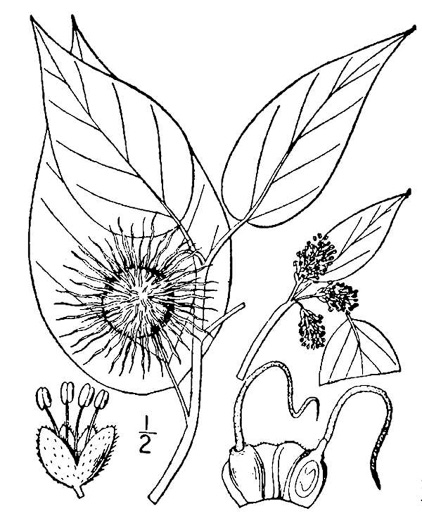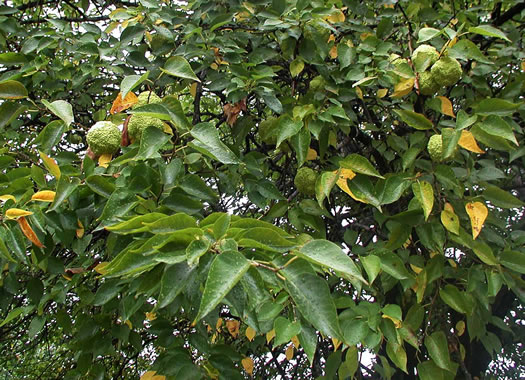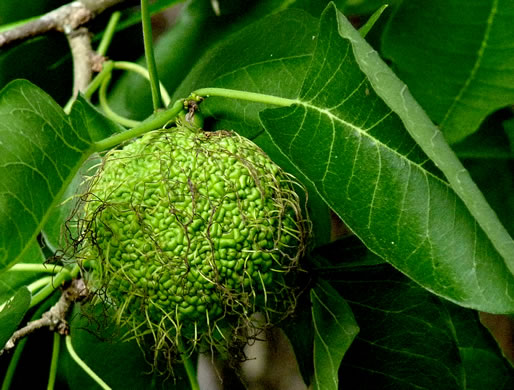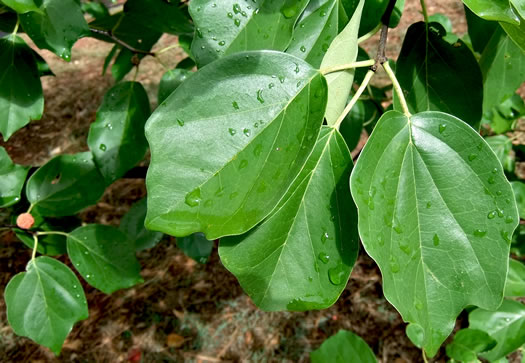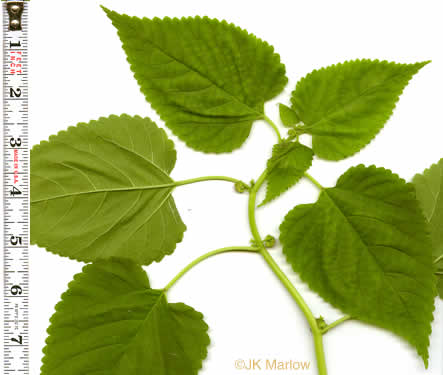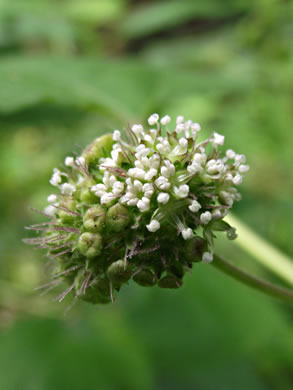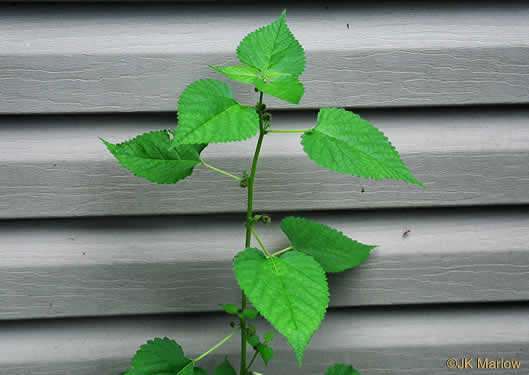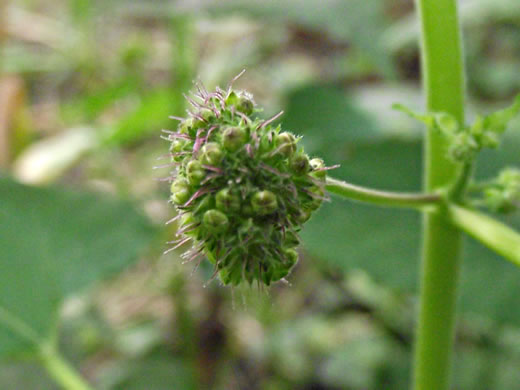Hovering over an image will enlarge it and point out features (works better on desktop than on mobile).
![]() A camera indicates there are pictures.
A camera indicates there are pictures.
![]() A speaker indicates that a botanical name is pronounced.
A speaker indicates that a botanical name is pronounced.
![]() A plus sign after a Latin name indicates that the species is further divided into varieties or subspecies.
A plus sign after a Latin name indicates that the species is further divided into varieties or subspecies.
Most habitat and range descriptions were obtained from Weakley's Flora.
Your search found 10 taxa in the family Moraceae, Mulberry family, as understood by PLANTS National Database.

![]()
![]() Common Name:
Paper Mulberry
Common Name:
Paper Mulberry
Weakley's Flora: (4/24/22) Broussonetia papyrifera FAMILY: Moraceae
SYNONYMOUS WITH PLANTS National Database: Broussonetia papyrifera FAMILY: Moraceae
SYNONYMOUS WITH Vascular Flora of the Carolinas (Radford, Ahles, & Bell, 1968): Broussonetia papyrifera 057-01-001 FAMILY: Moraceae
Habitat: Urban lots, disturbed areas, roadsides
Common (uncommon in GA Coastal Plain)
Non-native: east Asia

![]()
![]() Common Name:
White Mulberry, Silkworm Mulberry, Russian Mulberry
Common Name:
White Mulberry, Silkworm Mulberry, Russian Mulberry
Weakley's Flora: (4/14/23) Morus alba FAMILY: Moraceae
SYNONYMOUS WITH PLANTS National Database: Morus alba FAMILY: Moraceae
SYNONYMOUS WITH Vascular Flora of the Carolinas (Radford, Ahles, & Bell, 1968): Morus alba 057-02-001 FAMILY: Moraceae
Habitat: Disturbed areas, vacant lots, roadsides, moist forests
Uncommon (rare in Mountains of GA & NC)
Non-native: east Asia

Common Name: Korean Mulberry
Weakley's Flora: (4/14/23) Morus indica FAMILY: Moraceae
Habitat: Fencerows, suburban areas, disturbed areas
Non-native: east Asia

![]()
![]() Common Name:
Red Mulberry
Common Name:
Red Mulberry
Weakley's Flora: (4/14/23) Morus rubra FAMILY: Moraceae
INCLUDING PLANTS National Database: Morus rubra var. rubra FAMILY: Moraceae
SYNONYMOUS WITH Vascular Flora of the Carolinas (Radford, Ahles, & Bell, 1968): Morus rubra 057-02-002 FAMILY: Moraceae
Habitat: Bottomland forests, mesic slopes, disturbed areas, suburban woodlands
Common
Native to the Carolinas & Georgia

![]()
![]() Common Name:
Osage-orange, Hedge-apple, Bow-wood
Common Name:
Osage-orange, Hedge-apple, Bow-wood
Weakley's Flora: (4/24/22) Maclura pomifera FAMILY: Moraceae
SYNONYMOUS WITH PLANTS National Database: Maclura pomifera FAMILY: Moraceae
SYNONYMOUS WITH Vascular Flora of the Carolinas (Radford, Ahles, & Bell, 1968): Maclura pomifera 057-03-001 FAMILY: Moraceae
Habitat: Dry-mesic to mesic upland forests and woodlands, bottomland and riparian forests, stream banks, fencerows, old fields, pastures, prairies, roadsides, naturalized beyond its native range from extensive planting in the eighteenth and nineteenth centuries
Common in Mountains of GA & SC, common in Piedmont of GA & SC (uncommon to rare elsewhere in GA-NC-SC)
Native: west of the Carolinas & Georgia

![]() Common Name:
Edible Fig, Garden Fig
Common Name:
Edible Fig, Garden Fig
Weakley's Flora: (4/24/22) Ficus carica FAMILY: Moraceae
SYNONYMOUS WITH PLANTS National Database: Ficus carica FAMILY: Moraceae
SYNONYMOUS WITH Vascular Flora of the Carolinas (Radford, Ahles, & Bell, 1968): Ficus carica 057-04-001 FAMILY: Moraceae
Habitat: Grown for its fruits, persistent from plantings, persisting and naturalizing particularly on barrier islands, where it sometimes forms thickets on dunes, or otherwise in the outer Coastal Plain, where proximity to the ocean ameliorates cold winter temperatures
Rare
Non-native: west Asia

![]() Common Name:
Laurel Fig, Indian-laurel
Common Name:
Laurel Fig, Indian-laurel
Weakley's Flora: (4/24/22) Ficus microcarpa FAMILY: Moraceae
SYNONYMOUS WITH PLANTS National Database: Ficus microcarpa FAMILY: Moraceae
Habitat: Suburban woodlands, also in a wide range of natural and semi-natural habitats
Non-native: Paleotropics

![]() Common Name:
Climbing Fig, Creeping Fig
Common Name:
Climbing Fig, Creeping Fig
Weakley's Flora: (4/24/22) Ficus pumila FAMILY: Moraceae
SYNONYMOUS WITH PLANTS National Database: Ficus pumila FAMILY: Moraceae
Habitat: Walls, disturbed urban areas
Rare in GA & SC (waifs in NC)
Non-native: south Asia

![]()
![]() Common Name:
Cudrania, Strawberry-bush, Chinese Che
Common Name:
Cudrania, Strawberry-bush, Chinese Che
Weakley's Flora: (4/24/22) Maclura tricuspidata FAMILY: Moraceae
SYNONYMOUS WITH PLANTS National Database: Cudrania tricuspidata FAMILY: Moraceae
Habitat: Forest edges, suburban woodlands, escaped and naturalized from plantings
Waifs (escaped & naturalized from plantings)
Non-native: China/Korea

![]()
![]() Common Name:
Mulberry-weed, Crabweed, Foolish-weed
Common Name:
Mulberry-weed, Crabweed, Foolish-weed
Weakley's Flora: (4/24/22) Fatoua villosa FAMILY: Moraceae
SYNONYMOUS WITH PLANTS National Database: Fatoua villosa FAMILY: Moraceae
Habitat: Disturbed areas, vegetable and flower gardens, landscaped areas around institutional buildings
Uncommon in Carolina Piedmont (rare elsewhere in GA-NC-SC)
Non-native: Asia
Your search found 10 taxa. You are on page PAGE 1 out of 1 pages.

